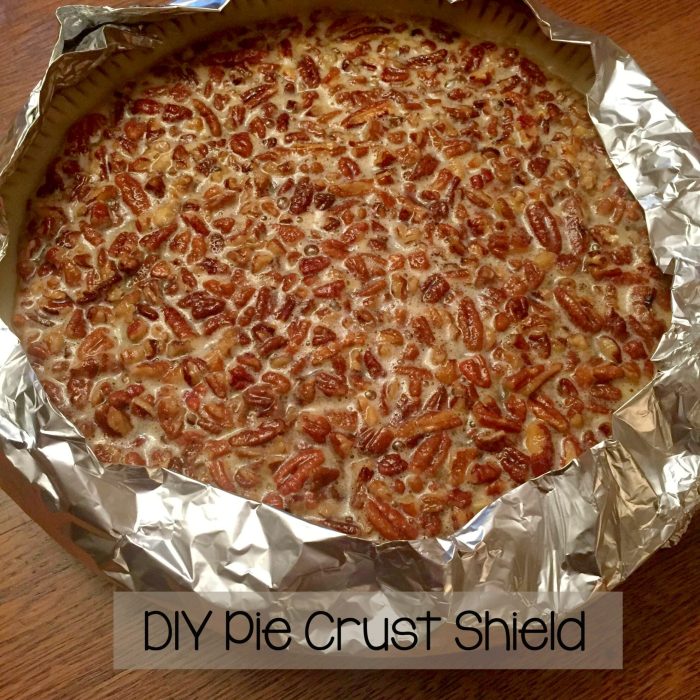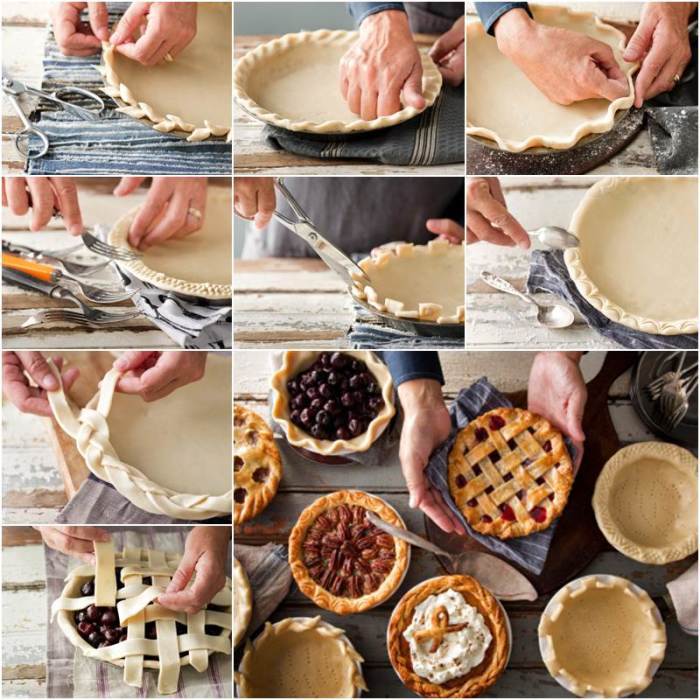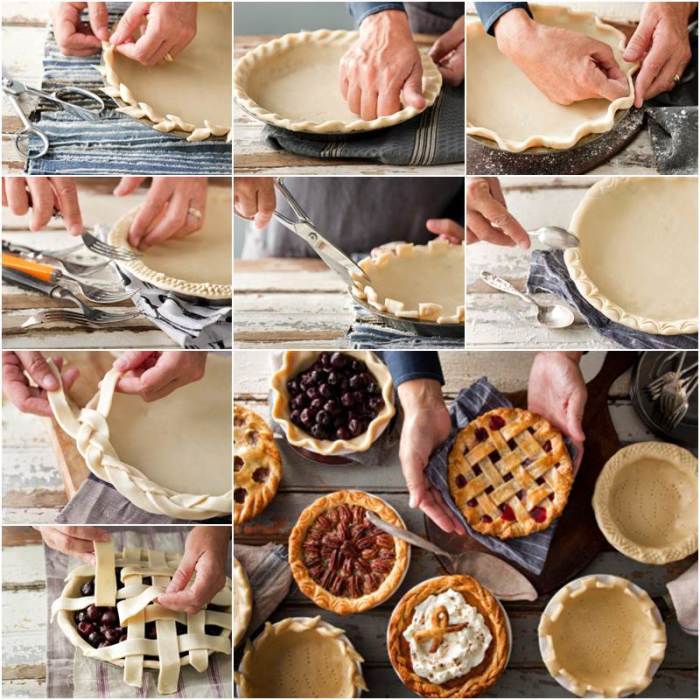DIY pie crust is a culinary adventure that allows you to create a delectable foundation for your favorite pies. From the classic buttery crust to innovative variations, crafting your own pie crust is a rewarding experience. This journey will guide you through the essential steps, techniques, and tips for creating a perfect pie crust that will impress your taste buds and leave you wanting more.
Table of Contents
The allure of homemade pie crust lies in its versatility. Whether you’re crafting a sweet fruit pie, a savory quiche, or a decadent cream pie, the right pie crust can elevate your baking to new heights. The satisfaction of creating a flaky, tender crust from scratch is unparalleled, and the possibilities for flavor and texture are endless.
Pie Crust Variations

A classic pie crust is a delightful base for sweet and savory pies. However, you can explore numerous variations to elevate your pie-making skills. This section will explore the differences between sweet and savory pie crusts, delve into the use of alternative ingredients, and provide recipes for unique pie crust flavors.
Sweet and Savory Pie Crusts
Sweet and savory pie crusts differ primarily in their intended use and flavor profiles. Sweet pie crusts are typically made with sugar and are used for fruit pies, cream pies, and other desserts. Savory pie crusts, on the other hand, are made without sugar and are used for meat pies, vegetable pies, and other savory dishes.
- Sweet Pie Crusts: Sweet pie crusts often incorporate sugar and sometimes butter for a rich, flaky texture and a slightly sweet taste. These crusts are ideal for fruit pies, cream pies, and other desserts where sweetness is desired.
- Savory Pie Crusts: Savory pie crusts typically omit sugar and often use lard or shortening for a tender, flaky texture. They are perfect for meat pies, vegetable pies, and other savory dishes where a neutral flavor is preferred.
Alternative Ingredients in Pie Crusts
While traditional pie crusts are made with flour, butter, and water, you can experiment with alternative ingredients to add unique flavors and textures.
- Nuts: Adding finely ground nuts like almonds, walnuts, or pecans can enhance the flavor and texture of pie crusts. Nuts contribute a nutty flavor and a slightly crunchy texture. For example, adding finely ground almonds to a sweet pie crust can create a unique almond-flavored crust, while using ground walnuts in a savory pie crust can provide a rich, nutty flavor.
- Oats: Rolled oats can be incorporated into pie crusts to add a hearty, slightly chewy texture. They also contribute a subtle oat flavor and can be used in both sweet and savory pie crusts. For example, adding oats to a sweet pie crust can create a more rustic and hearty crust, while using oats in a savory pie crust can add a subtle, earthy flavor.
- Cheese: Grated cheese, such as Parmesan or cheddar, can be added to savory pie crusts to enhance their flavor and create a more robust texture. Cheese contributes a savory, salty flavor and a slightly crumbly texture. For example, adding grated Parmesan cheese to a savory pie crust can create a flavorful and cheesy crust, while using cheddar cheese can provide a sharp, tangy flavor.
Unique Pie Crust Flavors
Beyond the traditional sweet and savory flavors, you can create unique pie crusts with interesting additions like chocolate or cinnamon.
- Chocolate Pie Crust: For a decadent twist, incorporate cocoa powder into your pie crust. The chocolate flavor complements fruit pies, especially those with berries or cherries. For a chocolate pie crust, simply add 1-2 tablespoons of unsweetened cocoa powder to your favorite pie crust recipe. The cocoa powder will add a rich chocolate flavor and a slightly darker color to the crust.
- Cinnamon Pie Crust: Add a warm, comforting touch to your pie crust with cinnamon. Cinnamon pairs well with apple pies, pumpkin pies, and other fall-inspired desserts. To make a cinnamon pie crust, simply add 1-2 teaspoons of ground cinnamon to your favorite pie crust recipe. The cinnamon will add a warm, spicy flavor and a delightful aroma to the crust.
Pie Crust Storage and Handling: Diy Pie Crust
Making a pie crust from scratch is a rewarding experience, but it’s not always practical to bake a whole pie right away. Luckily, there are ways to store and handle your homemade pie crust so you can enjoy it later.
Storing Unbaked Pie Crust
Storing unbaked pie crust is best done in the refrigerator, where it can remain fresh for up to 3 days. Here’s how:
- Wrap the pie crust tightly in plastic wrap or aluminum foil, ensuring no air pockets remain. This prevents the crust from drying out and becoming brittle.
- If you plan to store the crust for longer than a day, consider freezing it. This helps preserve its quality and allows you to bake it at your convenience.
Freezing Pie Crust
Freezing pie crust is a great way to have a homemade crust ready whenever you need it. To freeze a pie crust, follow these steps:
- Wrap the rolled-out crust tightly in plastic wrap, then place it in a freezer bag. Squeeze out as much air as possible before sealing the bag.
- For easier handling, you can freeze the crust in a pie plate, then transfer it to a freezer bag once frozen.
- Frozen pie crusts can be stored for up to 3 months.
Thawing Frozen Pie Crust
When you’re ready to use a frozen pie crust, you need to thaw it properly. Here’s how to do it:
- Transfer the frozen pie crust from the freezer to the refrigerator and let it thaw overnight. This allows the crust to thaw gradually and prevents it from becoming soggy.
- If you need to thaw the crust more quickly, you can place it in a sealed plastic bag and submerge it in a bowl of cold water for about 30 minutes. Make sure the bag is completely submerged in water.
- Once thawed, the pie crust is ready to be used in your favorite pie recipe.
Pie Crust Tools and Equipment

Creating a delicious pie crust requires the right tools to ensure a successful outcome. From rolling pins to pie plates, each tool plays a crucial role in shaping and baking the perfect crust. Understanding the purpose and benefits of these tools will enhance your pie-making experience.
Essential Tools for Pie Crust Making
- Rolling Pin: A rolling pin is essential for flattening and shaping the pie dough. Choose a rolling pin that is comfortable to grip and provides even pressure. Wooden rolling pins are traditional and offer good heat distribution, while marble rolling pins are known for their coolness and ease of cleaning.
- Measuring Cups and Spoons: Precise measurements are key for achieving a consistent and flavorful crust. Use standard measuring cups and spoons for dry ingredients like flour and sugar. For liquid ingredients like water or butter, use liquid measuring cups.
- Pie Plate: The pie plate is the vessel that holds the crust and filling. Choose a pie plate that is the right size for your recipe and has a smooth, even surface. Glass pie plates are popular for their visibility and heat distribution, while metal pie plates offer durability and even browning.
Benefits of Using a Food Processor for Pie Crust Preparation, Diy pie crust
A food processor can be a valuable tool for making pie crust, offering several benefits:
- Faster and Easier Dough Mixing: A food processor quickly and evenly combines the ingredients, reducing the need for manual mixing and ensuring consistent dough texture.
- Precisely Cut Butter: The food processor’s blades efficiently cut cold butter into the flour, creating small butter pieces that contribute to a flaky crust.
- Reduced Handling: By using a food processor, you minimize handling of the dough, preventing it from becoming too warm and tough.
Types of Pie Plates and Their Suitability
| Type of Pie Plate | Suitability for Crust | Pros | Cons |
|---|---|---|---|
| Glass Pie Plate | All types of crusts | Visible crust, even heat distribution | Can crack under extreme temperature changes |
| Metal Pie Plate | All types of crusts | Durable, even browning | Can be prone to rusting, may require greasing |
| Ceramic Pie Plate | Traditional and flaky crusts | Attractive appearance, retains heat well | Can be fragile, may not be suitable for deep-dish pies |
| Disposable Pie Plate | Simple crusts for casual baking | Convenient, inexpensive | Not reusable, may not be as durable |
As you embark on your pie crust journey, remember that patience and practice are key. Don’t be discouraged by initial imperfections; each attempt brings you closer to mastering the art of the perfect pie crust. Experiment with different flavors, techniques, and ingredients to discover your own signature style. Whether you’re a seasoned baker or a curious novice, the world of homemade pie crust awaits, ready to tantalize your senses and inspire your creativity.
Making a homemade pie crust is a rewarding culinary experience, and it’s a great way to personalize your baking. Just like creating your own pie crust, hydroponics DIY allows you to tailor your growing system to your specific needs and preferences. Whether you’re a seasoned baker or a beginner, both projects offer a sense of accomplishment and delicious results.


